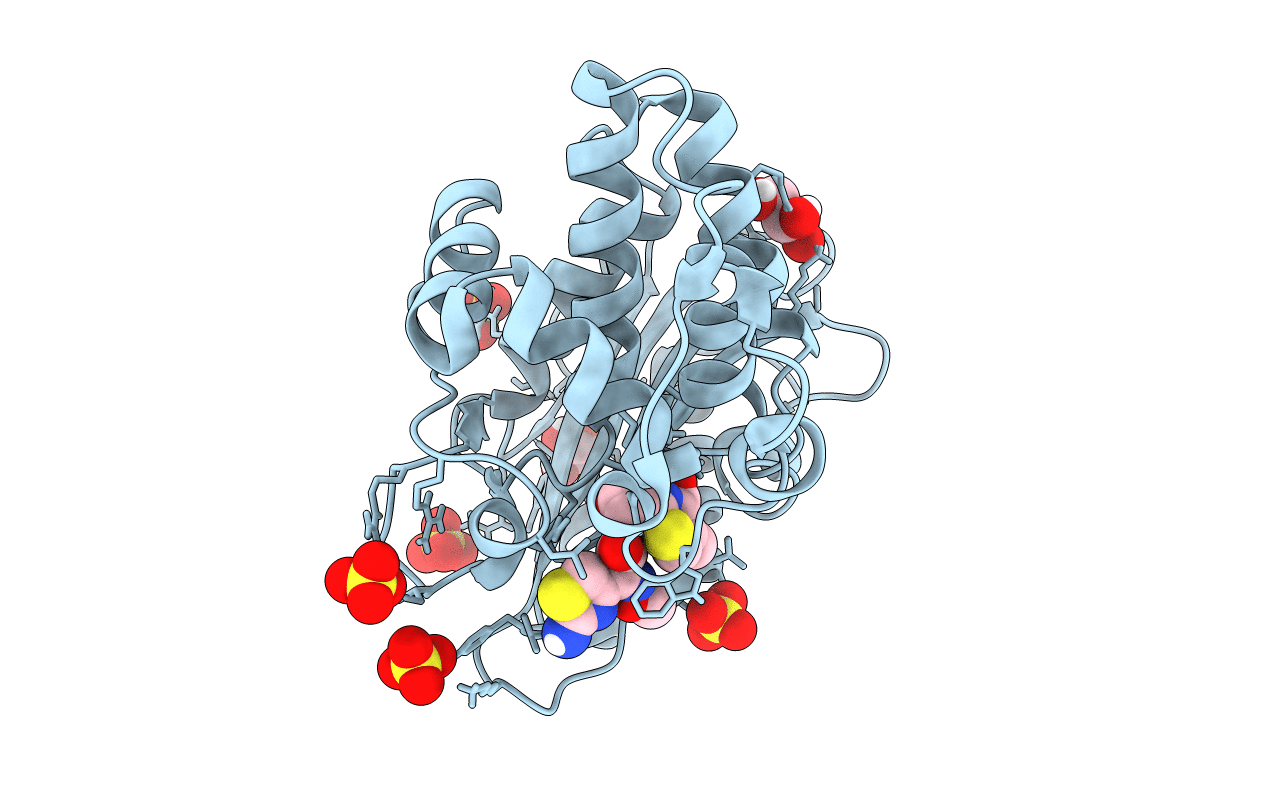
Deposition Date
2020-05-14
Release Date
2020-12-23
Last Version Date
2024-11-13
Entry Detail
PDB ID:
6Z23
Keywords:
Title:
Acylenzyme complex of cefotaxime bound to deacylation mutant KPC-2 (E166Q)
Biological Source:
Source Organism:
Klebsiella pneumoniae (Taxon ID: 573)
Host Organism:
Method Details:
Experimental Method:
Resolution:
1.31 Å
R-Value Free:
0.17
R-Value Work:
0.14
R-Value Observed:
0.14
Space Group:
P 21 21 2


